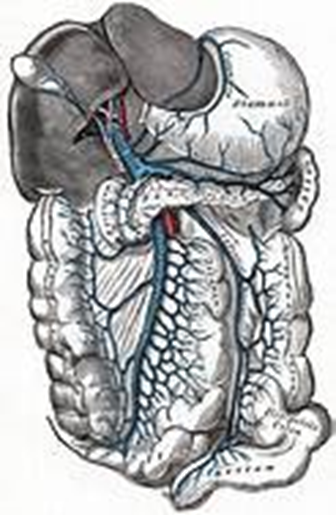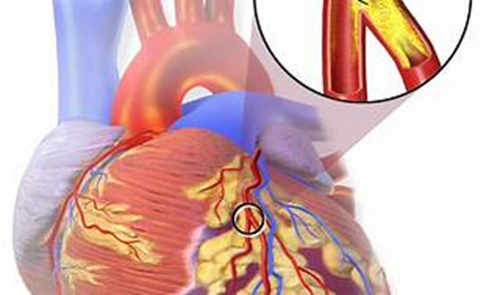A client is admitted to the emergency department after sustaining multiple rib fractures in a motor vehicle accident. Upon assessment, the nurse notes that the client has flail chest. Which of the following signs and symptoms are associated with this condition? (Select all that apply.)
Bradycardia
Anxiety
Dyspnea
Unequal chest expansion
Paradoxical chest movement
Correct Answer : B,C,D,E,F
Choice A: Bradycardia Bradycardia, or a slower than normal heart rate, is not typically a direct symptom of flail chest. While traumatic injuries can lead to various cardiac responses, bradycardia is not commonly associated with the respiratory distress seen in flail chest. Flail chest is a serious condition that occurs when a segment of the rib cage breaks due to trauma and becomes detached from the rest of the chest wall. This can severely affect breathing and lead to other complications.
Choice B: Anxiety Anxiety is a common response in patients with flail chest due to the pain and difficulty in breathing associated with the condition. The stress of the injury and the body’s response to the trauma can lead to feelings of anxiety and panic.
Choice C: Dyspnea Dyspnea, or difficulty breathing, is one of the primary symptoms of flail chest. The instability of the chest wall and the paradoxical movement of the flail segment impair the normal mechanics of breathing, leading to shortness of breath.
Choice D: Unequal chest expansion Unequal chest expansion is a hallmark sign of flail chest. The affected area of the chest wall moves in the opposite direction to the rest of the chest during the respiratory cycle, which can be observed as an abnormal movement during inhalation and exhalation.
Choice E: Hypotension Hypotension, or low blood pressure, can occur in flail chest cases, especially if there is associated trauma such as bleeding or if the patient is in shock. The body’s response to the injury and the potential for compromised venous return due to the chest wall’s dysfunction can lead to hypotension.
Choice F: Paradoxical chest movement Paradoxical chest movement is a definitive sign of flail chest. It occurs when the broken section of the rib cage moves inward during inhalation and outward during exhalation, opposite to the normal chest movement. This is due to the loss of stability in the chest wall and is easily observable during a physical examination. Flail chest is a critical condition that requires immediate medical attention. The signs and symptoms associated with this condition include anxiety, dyspnea, unequal chest expansion, hypotension, and paradoxical chest movement. These symptoms reflect the underlying pathophysiology of the condition, which is the instability of the chest wall and the resulting impairment of normal respiratory function.


Nursing Test Bank
Naxlex Comprehensive Predictor Exams
Related Questions
Correct Answer is B
Explanation
Choice A: “I have a tight sensation in my lower leg when I forget to put my feet up.” This statement may indicate the presence of edema, which is common in cirrhosis due to hypoalbuminemia and sodium retention. However, it is not as immediately concerning as other symptoms because it can often be managed with diuretics and compression. It is important to monitor for worsening edema, as it can lead to increased discomfort and risk of skin breakdown.
Choice B: “I can’t button my pants anymore because my belly is so swollen.” This statement is concerning because it suggests the development of ascites, which is the accumulation of fluid in the peritoneal cavity, causing abdominal swelling. Ascites can lead to abdominal discomfort, difficulty breathing, and is a sign of advanced liver disease with significant portal hypertension. It requires medical evaluation and management, which may include paracentesis (removal of fluid), diuretics, and sodium restriction. Cirrhosis is a late stage of scarring (fibrosis) of the liver caused by many forms of liver diseases and conditions, such as hepatitis and chronic alcoholism. Portal hypertension is an increase in the blood pressure within a system of veins called the portal venous system. Veins from the stomach, intestine, spleen, and pancreas merge into the portal vein, which then branches into smaller vessels and travels through the liver.
Choice C: “I’m very constipated and have been straining during bowel movements.” While constipation is uncomfortable and can indicate dietary issues or side effects from medication, it is not typically a direct complication of cirrhosis or portal hypertension. However, straining during bowel movements can increase the risk of bleeding from esophageal varices if they are present, so it is important to manage constipation to prevent potential complications.
Choice D: “When I sleep, I have to sit in a recliner so that I can breathe more easily.” This statement indicates orthopnea, which can be associated with ascites or pleural effusions (fluid in the lungs), both of which can occur in the setting of cirrhosis and portal hypertension. While this symptom is concerning and affects the client’s quality of life, it is generally less concerning than the development of ascites, as it can be managed with adjustments in sleeping position and medical management of the underlying fluid accumulation.

Correct Answer is A
Explanation
Choice A: Troponin Troponin levels increase within 3-12 hours from the onset of chest pain, peak at 24-48 hours, and return to baseline over 5-14 days. Troponin is a protein found in cardiac muscle fibers that regulates muscular contraction. When heart muscle is damaged, as in the case of an MI, troponin is released into the bloodstream. The elevation of troponin levels is a key indicator of myocardial infarction and can be used to diagnose and assess the extent of heart muscle damage. Troponin is the most reliable laboratory value that is expected to be elevated following a myocardial infarction, making it the correct choice in this scenario.
Choice B: Aspartate aminotransferase (AST) AST is an enzyme found in high concentrations in the liver, heart, muscles, kidneys, and brain. It is released into the bloodstream when any of these tissues are damaged. While AST can be elevated in cases of MI, it is not as specific as troponin because it is present in many other tissues besides the heart.
Choice C: Serum amylase Serum amylase is an enzyme that helps digest carbohydrates and is primarily associated with the pancreas and salivary glands. Its elevation is not specifically related to myocardial infarction but can be seen in other conditions such as pancreatitis.
Choice D: Unconjugated bilirubin Unconjugated bilirubin is a breakdown product of hemoglobin from red blood cells. Elevated levels of unconjugated bilirubin are typically associated with conditions affecting the liver or the breakdown of red blood cells, not myocardial infarction.

Whether you are a student looking to ace your exams or a practicing nurse seeking to enhance your expertise , our nursing education contents will empower you with the confidence and competence to make a difference in the lives of patients and become a respected leader in the healthcare field.
Visit Naxlex, invest in your future and unlock endless possibilities with our unparalleled nursing education contents today
Report Wrong Answer on the Current Question
Do you disagree with the answer? If yes, what is your expected answer? Explain.
Kindly be descriptive with the issue you are facing.
